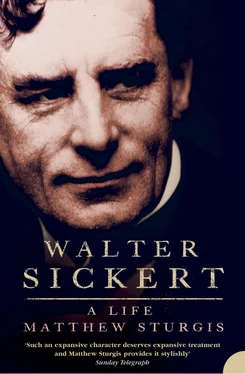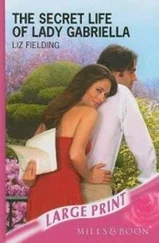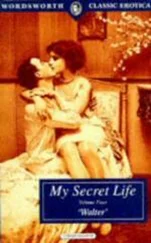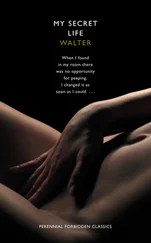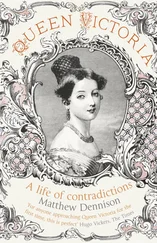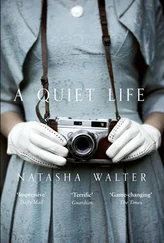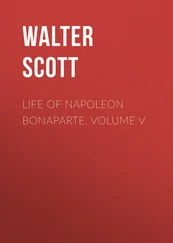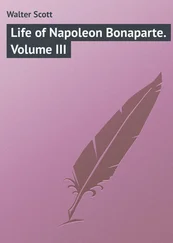†Sickert had sent a little ‘still life’ pastel to Les XX in 1887, but it had not attracted a great deal of attention. In a letter to Blanche, however, he does mention a dinner at the Hogarth Club in the autumn of 1888 at which Sir Coutts Lindsay, owner of the Grosvenor Gallery, asked him with ‘une naïveté et une politesse exquise’ if he had ever tried pastel – ‘!’. The level and direction of Sickert’s irony, as indicated by his exclamation mark, is difficult to gauge. Had Sickert submitted a pastel that had been rejected? Had he enjoyed an acclaimed success with a pastel elsewhere? Or had he simply not tried pastel seriously yet?
* See Postscript.
III THE LONDON IMPRESSIONISTS
You have given us a great lift.
(Walter Sickert to D. C. Thomson)
The band of ‘Followers’ that had once gathered around Whistler, or sat about the paraffin stove in Baker Street, was rapidly losing its cohesion. Menpes, already ostracized by Whistler on account of an unsanctioned sketching trip to Japan (an artistic world that had been mapped and colonized but never actually visited by the Master), became a focus for active attack when, towards the end of 1888, a series of highly complimentary articles on him and his work appeared in the press. 1 Whistler was furious, and sought to enlist Sickert’s aid in countering such unmerited publicity. 2 Sickert counselled restraint. He wrote to Beatrice, knowing the beneficial influence she exerted over her excitable husband: ‘Tell Jimmy not on any account to be drawn by Menpes’ rot. It is the one object he would like to achieve … He must be let severely alone . Tell Jimmy he mustn’t say good things about him because that is advertisement.’ 3 Whistler was never likely to take such good advice. He responded with a salvo of vituperative – even vicious – squibs in the pages of The World that damned Menpes as a talentless plagiarist. Sickert’s own friendship with Menpes did not survive this campaign of abuse. The ferocity of Whistler’s feelings would have made it difficult for anyone to remain friends with both men. Moreover, Sickert’s relationship with Menpes had always been largely fortuitous: it was fostered by their common bond with Whistler, and once that bond was broken there was little else to keep them together. Menpes, probably to Sickert’s relief, did not join the NEAC, or send any more pictures there. Another casualty from the group was William Stott of Oldham, who had been looking after Maud Franklin since the break-up of her relationship with Whistler. Incensed by what he considered to be Whistler’s shoddy treatment of his one-time mistress, he had publicly insulted his erstwhile hero one evening at the Hogarth Club, and then got into an unseemly scuffle with him. 4 Elizabeth Armstrong also drifted out of the circle. On a sketching trip down to St Ives she had met and become engaged to the plein-air painter Stanhope Forbes, who, although still a member of the NEAC, was in stark opposition to Sickert’s faction. He disapproved of Whistler and Sickert, and urged his fiancée to disassociate herself from such bad – if amusing – influences. 5
Sickert, with touching solicitude, constantly sought to reassure Whistler of his own enduring loyalty and support, but the main focus of his energies – and the balance of his allegiances – had subtly shifted. He was now an ‘Impressionist’ rather than merely a ‘Whistlerite’. His thoughts were concentrated on the New English Art Club; and, despite repeated solicitations, Whistler still stood out from the group. 6 It had been supposed by several commentators that, once ousted from Suffolk Street, Whistler would find a refuge at the NEAC; but, though he continued to allow his work to be exhibited, he declined to become a member of the new body. 7 It was said that the former President of the RSBA disdained to join a club that was so democratic as to have no president. 8 Certainly he must have realized that he would not be able to regain the same level of command over his ‘pupil’ as he had once enjoyed.
Whistler’s absence from the NEAC gave Sickert a freer hand, and he rose in stature and assurance. In his plans for the infiltration of the NEAC – and the promotion of the ‘Impressionist clique’ – he adopted many of Whistler’s tactics, as well as something of his pose. He became a noted figure in Chelsea and beyond, conspicuous in his ‘wonderful clothes’. His ‘dashing’ dove-grey tailcoat projected an air of theatricality; 9 and the cultivation of a splendid ‘large fair moustache’ lent him a new distinction – ‘like a French cavalryman of the day’. 10 He affected a huge ribboned bow instead of a necktie, and persuaded several other members of the clique to follow this example of ‘Latin Quarter’ chic. 11
Beyond the advertisement of dress, he sought to publicize the aims and character of the clique. His pupillage at Tite Street had taught him much about the importance of gaining a voice in the press, even if he felt that Whistler sometimes went too far to secure such coverage (devoting precious hours on one occasion to wooing the sports reporter of the Fulham local paper in the hope of a flattering mention). 12 Sickert strove to find more sympathetic allies. Of the established critics, only the querulous and somewhat prissy Frederick Wedmore, who wrote in both the weekly Academy and the daily Standard , had any knowledge, or appreciation, of French Impressionism; but his cautious approbation would need to be backed by new – and more enthusiastic – voices. There were several clamouring to be heard. It was a time of great proliferation in the press. Cheap printing costs and an ever-expanding urban readership had led to an efflorescence of new papers and periodicals, and amongst these publications Sickert found willing supporters.
His great ally was George Moore. The author of A Modern Lover was, of course, sympathetic to the aims and ideals of the NEAC’s Impressionist clique; and although Moore’s only regular column was in The Hawk , a small-circulation paper published by his brother, his energy, his wit, and his own growing reputation as a writer striving to transpose French literary innovations into English gave him a profile out of proportion to his immediate readership. For Sickert, his great knowledge of the Parisian scene, his memories of Manet, and his friendship with Degas made him an invaluable repository of information. Sickert and the other young ‘Impressionists’ respected him enormously. They put up with his eccentricities (he had a habit of turning up unannounced at Broadhurst Gardens, to share his latest ‘very important’ discovery); * they invited him to their councils; and they listened to his views. Elie Halévy, after spending time in London with the NEAC crowd, described them as being ‘ruled over by George Moore’. 13 As Sickert later admitted, news that Moore ‘liked, or didn’t like, one of our pictures’ flew at once ‘round the Hogarth Club … And I believe we were genuinely elated or depressed’ according to his verdict. 14
Besides the oracular Moore there were several young painters who had taken to part-time reviewing. * Unsurprisingly, amongst these there were several pro-Whistlerians: the absurdity of allowing non-artists to criticize art had, after all, been one of the planks of Whistler’s attack on Ruskin. Alfred Lys Baldry, who had studied under Albert Moore and was an acknowledged admirer of Whistler, contributed regularly to a small-circulation weekly called The Artist & Journal of Home Culture . He was at once brought within the ambit of the ‘Impressionist’ group and encouraged to join the NEAC. 15 Sickert made an even closer friend of the Scottish-born painter George Thomson, who shared with Steer both a studio building and an interest in Monet. Thomson was supplementing his income by writing up exhibitions for the evening papers, 16 and despite a strong Aberdonian burr and a ‘rather gruffly gloomy address’ Sickert found him a ‘gentle and sympathetic’ soul. 17 He too began to send to the NEAC and to promote the Impressionist cause in his articles.
Читать дальше
